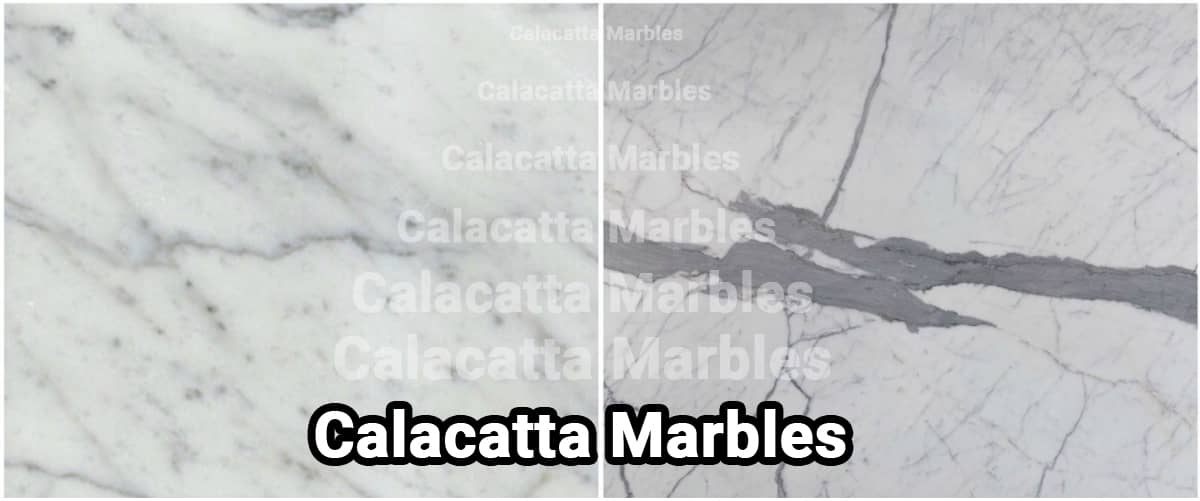Need to Know about Calacatta Marbles Made Simple

Calacatta marble stones make from natural stones mined in the northern mountains of Italy, from the Carrara region. There are many types of Carrara marble in the Carrara region, but these are one of the most expensive and exotic types.
The Calacatta marble tiles have distinctive veins and creamy white color, giving them a distinctive appearance. Temples, monuments, statues, etc., had been built with these marbles since Ancient Rome.
Features
Tiles made of Calacatta have large, unstructured veins. The marble type has fewer veins and soothing white background. Thus, it is easy to incorporate into a design. The veins in Calacatta tile range in color from gray to gold and are usually set against a white background.
Carrara is the only region in Italy that produces Calacatta marble tiles. From this quarry, they are produced in limited quantities. That makes them rare and costly. Calacatta tiles are each unique due to their veining. As a result, it should not be installed in areas with consistent d?cor.
Key Differences between Calacatta Marble & Carrara Marble
The stone from Carrara is usually not white but shows muddy hues. In addition to being less expensive, Carrara is also more readily available in any tile store and more widely available. Contrary to this, Calacatta features a crisp white background and very bold veining. Calacatta marble is far rarer than Carrara marble, although each slab of natural stone is unique.
Types of Calacatta Marbles
Calacatta Oro
With its white backdrop and dramatic grey veining, Calacatta Oro is a highly attractive marble. Several people want to own this marble. It is also among the most expensive. When used on a bench-top, fireplace, or bathroom, it exudes refinement and is visually stunning. Since ancient times, this traditional Italian marble has been used as a luxury construction material around the world. There are currently no other marbles of similar quality to Calacatta Oro. This marble will add timeless beauty and splendor to the decor of your home.
Calacatta Statuario
The Calacatta Statuario stands out with its dark grey veining and crisp geometric designs. Today's kitchens make from this stylish stone, and it is the ideal marble for showcasing your design choices. This stone is extremely popular for kitchen bench-tops and features walls as well. The appearance of the stone will enrich the surrounding environment.
Calacatta Corchia
Calacatta Corchia is a marble with a sophisticated vein pattern that includes cream with silky wisps of taupe, grey, and charcoal for an eye-catching contrast with its cold white backdrop. A variety of colors and sizes are available for Calacatta Corchia. Marble has traditional and elegant appeal both indoors and out, so it can be used in a variety of contexts. The stone is suitable for both formal and informal settings.
Calacatta Vagli
It has earthy grey-gold veining that has the appearance of being dreamlike. Marble with a veining pattern resembling calacutta is called Calacatta Vagli. Although this stone appears stunning, its versatility allows it to use in both large and small projects. Bench-tops, walls, kitchen island tops, shower niches, and fireplace hearths all highlight the elegance and richness of this stone.
Uses of Calacatta Marbles
Kitchen walls and countertops are made from Calacatta marble tiles, while bathroom tiles and floor tiles from Calacatta marble are used for luxury homes and offices.
Benefits of Calacatta Marbles
Calacatta marble tiles can build floors and walls because they are rare and luxurious pieces of marble. Their elegance and rarity make them a perfect choice. Their durability and easiness of maintenance make them a popular choice. The colors and patterns of the Calacatta tiles complement any design or color scheme. These tiles are heat- and stain-resistant, and they are non-porous.
Drawbacks of Calacatta Marbles
Carrara is the only region in Italy that produces Calacatta marble tiles. Due to the rarity and cost of these stones, they are limited in quantity and produced in limited quantities.
